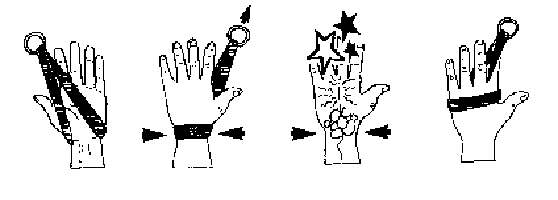
The wrist does its job very well. But it was not designed to be squashed together, and that's exactly what a wrist strap does. Pushed out of alignment, the Carpal Bones of the wrist compress the Carpal "Tunnel" and mash the Median Nerve. Sounds messy a nd is. Even a mild case is very uncomfortable. The answer to flying properly with straps is to take pressure off the wrist by wrapping it around the back of your hand and extending the strap between two fingers rather than between the finger and thumb. You can also hold the strap in your fist, like you would a handle. It's that simple.

No matter what you use for handles, after you've been flying for a while on any particular day, especially if you're flying a strong pulling kite or train, your hands will get tired. How long this takes depends on several things: your grip strength and th e condition of your hands, the comfort of the handles, size of the kite, and wind strength.
Again, the answer is simple. Land and rest your hands. Take a break! This is supposed to be fun!
For really hard pulling kites, padded straps work better. They don't cut into your hand or cut off circulation. Be sure your straps are loose enough that you can shake them off or slip your hands out quickly in an emergency.
Finally, and perhaps most important is this central rule about kites and handles. Handles, harnesses, and straps are all designed to help you hold on to hard pulling kites. But at some point, the kite or kites are going to become just too big for you. Thi nk about your safety and the safety of others.
If you can't hang on to it, you shouldn't be flying it !!
Extracted, with kind permission, from "Stunt Kites!" by David Gomberg.